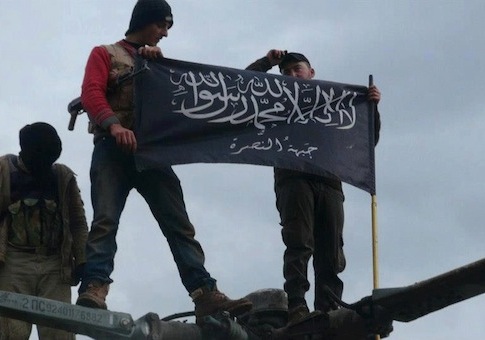The English language al Qaeda magazine Inspire, which disseminates articles supporting jihad, released a special issue earlier this month praising the terrorist attack in Orlando and calling for more like it.
The terrorist magazine has published 15 editions since 2010, offering articles ranging from how to use everyday objects such as a car to conduct terrorist operations, to religious justifications for targeting civilians.
Written by "Amin" of the "Lone Jihad Guide Team," the article praises the Orlando shooter and justifies his attacks in accordance with radical Islamic ideology, before offering critiques and "guidelines" for future lone-wolf terrorists.
The author recommends that future lone-wolf terrorists "avoid targeting places and crowds where minorities are generally found," and instead targets "areas where the Anglo-Saxon community is generally concentrated [sic throughout]."
"The media tried to portray the operation motives to be against a particular group of people in order to turn the American public away from the real motives of the operation," Amin explained, likely referencing reports that the Orlando shooter’s motivations were grounded in his suspected homosexuality rather than radicalized Islamism. Amin contends that the Orlando shooter targeted the Pulse nightclub for its relaxed security, tight quarters, and drunk patrons, which were factors in the high deaths and casualty numbers.
The article also contains insight into the minds behind international radical Islamic terrorism.
The author appears unperturbed by proposed gun control measures.
"This matter [of lone-wolf terrorism] always confirms to us that the main problem is not in obtaining the weapon, but is in the conviction, determination and will power to execute such Jihadi operations."
The author later criticizes the Orlando shooter for not using explosives to cause additional casualties, referring future "Lone Mujahid" to previous Inspire articles on how to produce bombs.
His suggestion is in line with previous Inspire article theory—al Qaeda’s most significant challenge is in finding those willing to attack America on its own soil, not how to arm them once they decide to conduct an operation. Al Qaeda operatives are asymmetrical warfare experts who can quickly adapt and evolve their tactics to remain operational, including any increase in gun-control laws, as evidenced by ISIS attacks in gun-restricted Europe.
The author also reminds future lone-wolfs that if they cannot obtain access to a rifle or handgun, there are a plethora of other options, including pressure cooker bombs like those used by the Tsarnaev brothers in Boston. Another Inspire article describes how to use a car as a battering ram to cause mass casualties in crowded areas.
The author appears to be reaching out across ideological and religious lines, indicating al Qaeda is more concerned with causing chaos in America rather than upstaging their rival ISIS. Recent reports have suggested the al Qaeda network is looking to maintain its legitimacy after suffering heavy losses in Afghanistan, Pakistan, and Iraq.
"We standby and support all Muslims who attack America in their homeland regardless of their affiliation to any group or loyalty," writes Amin, a direct reference to ISIS, who the Orlando shooter professed allegiance.
Al Qaeda leader Ayman al-Zawahiri declared war on ISIS in 2015, but the reaching across rival lines indicates Osama Bin Laden’s terrorist network is willing to put aside differences when it comes to attacking America.
Finally, the author appears to challenge future lone-wolf jihadists to cause more casualties than the Orlando shooter, whom he repeatedly praises for being responsible for the "worst shooting incident in the history of the Unites States."
"There were 350 people in the nightclub, 50 were killed, 53 injured i.e. a third were targeted and two thirds of them survived," observes the author, "It was possible to realize more and better results if the executer had merged and used other means in executing the operation."
